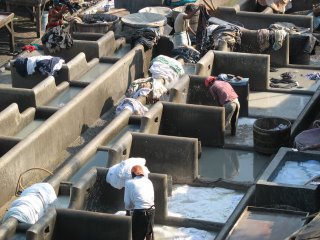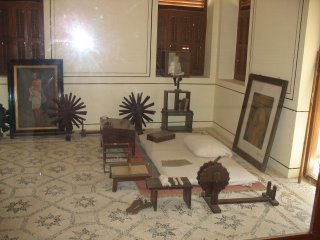Mumbai (Bombay) India: Making a Ripple on the Subcontinent
Okay, let’s get this out in the open right from the start. We’ve barely seen enough of India to talk about it. There are some cities, and even some countries, where four days are enough to give you a general idea about the place, but not India. We had originally planned on being here for five weeks, to see the ghats of Varanasi, the Taj Mahal and most importantly the rat temple at Bikaner, but after spending five weeks in China and Tibet, we weren’t sure that we had the stamina to “tackle” another huge and incredibly difficult country. And so coupled with the facts that we were justly worried about Dylan being crushed in the crowds or constantly touched, and had a very cautious reading from my friend Ruby the psychic, warning us about a particularly unsavory character we might cross paths with in India, we didn’t need much more encouragement to cut back our plans from 5 weeks to 4 days, essentially making this a stop-over on our way to Egypt. So we realize that we’ve just stuck a dainty toe into the huge ocean that is India.
But this is not to say that we’ve haven’t gained some impressions. We decided that since we had so little time, we would take the rich colonial route and hire a car and driver to show us the sights and take us shopping.

We’ve gazed in awe at the huge Gateway of India that sits on the edge of the city, which in the days before airplanes was the traditional welcoming harbour for visitors and conquerors alike.

We’ve watched the washmen at the Dhobi Ghats pounding thousands of pieces of laundry while trains pass by, packed so tight that men hang off the sides.


We’ve seen our first Jain temple, and walked through the hanging gardens, looking over the edge for the bodies laid out by the Parsis, who use the circling carrion birds to dispose of their dead. We’ve visited the rooms where Mahatma Gandhi stayed when he visited the city,

and we’ve even been given a blessing by a “priest.”

India is a land of contrasts. It is one of our most expensive stops and we are paying more here for a hotel than any other place in the world so far, yet outside our doors are two million citizens who are without a place to even go to the bathroom. They don’t even have access to the public latrines found in the slums, and have to run to the train tracks and do their “business” between the constantly traveling trains. It has one of the oldest living cultures in the world, yet cell phones and advertisements for financial services rule the landscape. And among the dirt and haze and grime, women in saris and salawar kameez manage to look fresh and polished, adding some beauty to this beleaguered city.

India has managed to enchant, frustrate, tease, and pain us, often all in the same moment. That is her spell and we have been smitten. For us, India will have to warrant its own trip, when we are fresh and not so weary. But if we have any say about it, we will be back, because if there is any place on this planet left for an adventure, we know we will find it here.
But this is not to say that we’ve haven’t gained some impressions. We decided that since we had so little time, we would take the rich colonial route and hire a car and driver to show us the sights and take us shopping.

We’ve gazed in awe at the huge Gateway of India that sits on the edge of the city, which in the days before airplanes was the traditional welcoming harbour for visitors and conquerors alike.

We’ve watched the washmen at the Dhobi Ghats pounding thousands of pieces of laundry while trains pass by, packed so tight that men hang off the sides.


We’ve seen our first Jain temple, and walked through the hanging gardens, looking over the edge for the bodies laid out by the Parsis, who use the circling carrion birds to dispose of their dead. We’ve visited the rooms where Mahatma Gandhi stayed when he visited the city,

and we’ve even been given a blessing by a “priest.”

India is a land of contrasts. It is one of our most expensive stops and we are paying more here for a hotel than any other place in the world so far, yet outside our doors are two million citizens who are without a place to even go to the bathroom. They don’t even have access to the public latrines found in the slums, and have to run to the train tracks and do their “business” between the constantly traveling trains. It has one of the oldest living cultures in the world, yet cell phones and advertisements for financial services rule the landscape. And among the dirt and haze and grime, women in saris and salawar kameez manage to look fresh and polished, adding some beauty to this beleaguered city.

India has managed to enchant, frustrate, tease, and pain us, often all in the same moment. That is her spell and we have been smitten. For us, India will have to warrant its own trip, when we are fresh and not so weary. But if we have any say about it, we will be back, because if there is any place on this planet left for an adventure, we know we will find it here.

1 Comments:
Hello, this is fantastic reading! I'm an Indian and have lived in the UK for most of my life and your views on India are simply amazing. Mumbai is considered quite a unsual place even for us NRI's (Non Resident Indians) and apart from the change for a domestic airline at the Airport, we are told that we should only travel with a guide in mumbai. Bravo and welldone!
Post a Comment
<< Home